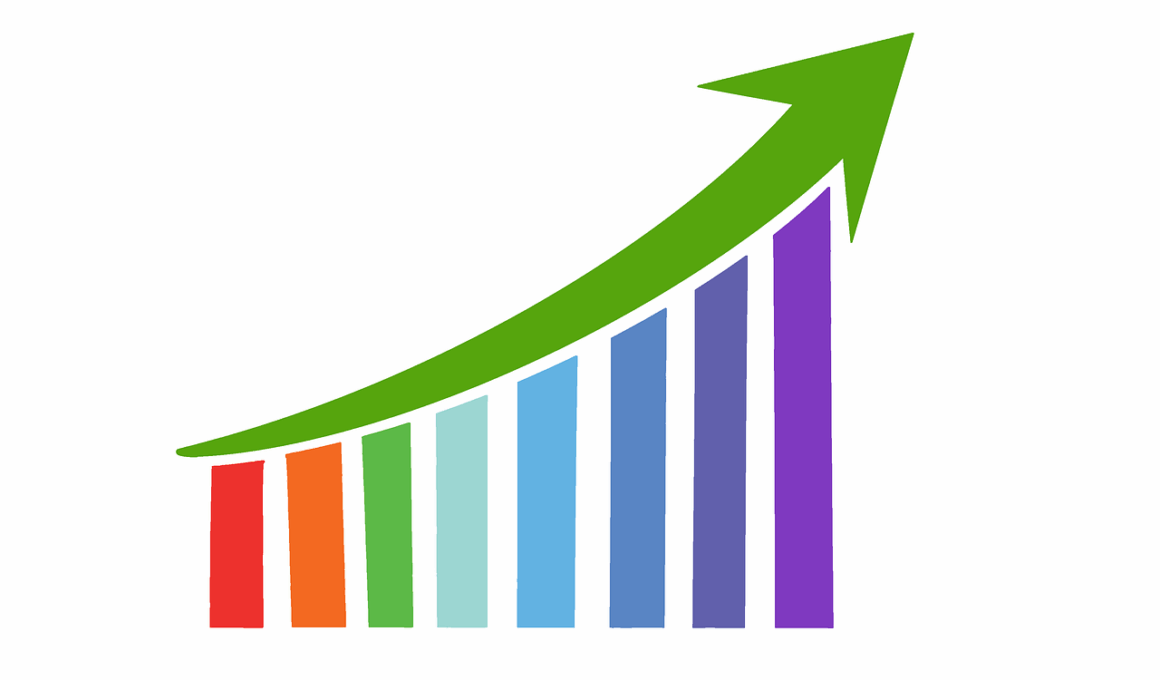Integrating Financial Risk Analytics with Business Analytics Platforms
In today’s competitive financial landscape, the convergence of business analytics and risk analytics is imperative for organizations aiming to maintain a competitive edge. Companies leverage risk analytics to identify, assess, and mitigate potential financial dangers while simultaneously optimizing business operations. This integration enables organizations to not only foresee risks but also to understand the underlying trends that could impact profitability and sustainability. Financial risk analytics uses historical data and advanced modeling techniques to provide insights that are crucial for decision-making processes. By merging these two analytical approaches, businesses can enhance their strategic planning capabilities, allowing decision-makers to allocate resources more effectively. This shift towards data-driven decision-making harnesses the power of analytics to drive proactive risk management. The analytical insights gleaned from this methodology facilitate a holistic view of the organization’s financial health, ultimately leading to better risk preparedness and response strategies. Furthermore, integrating these analytics allows for a seamless flow of information across departments, ensuring alignment in strategic objectives and operational execution, which is vital for achieving financial resilience amid evolving market dynamics.
One key benefit of integrating financial risk analytics with business analytics platforms is the ability to harness real-time data processing. Real-time data enables businesses to react swiftly to emerging risks or opportunities in their environment, significantly enhancing their adaptability. This agility is vital in today’s fast-paced markets, where delays in insight can lead to substantial financial losses. Additionally, organizations can employ various tools to automate real-time data integration, fostering agile risk assessment while mitigating human error. Enhanced forecasting accuracy is another critical advantage; through the application of advanced predictive models, organizations can refine their financial models and better anticipate future market conditions. Automation of data feeds and algorithmic adjustments ensures that these forecasts remain relevant, which is essential for informed strategic decision-making. Moreover, businesses benefit from the analytics-driven forecasting that aligns financial risk with overall corporate strategy. Employees across various departments gain access to consistent information, promoting a data-centric culture that thrives on shared insights. Thus, integrating financial risk analytics with business analytics platforms is not just beneficial; it is becoming a necessity for organizations aiming for sustained competitive advantage.
Enhanced Collaboration Across Departments
Integrating financial risk analytics into business analytics fosters enhanced collaboration across departments. This partnership enables teams to work toward a unified objective by sharing valuable insights that drive informed decision-making. Each department contributes its expertise, from risk management to sales, creating a comprehensive understanding of financial dynamics. This collaborative environment ensures that all areas of the business are aligned, reducing silos that often hinder communication and efficiency. By sharing risk-related data, organizations can harmonize their strategies, leading to more robust risk mitigation efforts. Additionally, real-time dashboards equipped with key risk indicators empower teams to visualize and analyze financial health together. Such visualizations make complex data more digestible, empowering non-technical staff to engage with risk analytics. Regular cross-departmental meetings can also be facilitated to discuss data findings, creating a culture of continuous improvement and knowledge sharing. This collaboration significantly enhances the organization’s ability to adapt to changes in the marketplace while maintaining focus on overarching business objectives. As a result, integrating risk analytics with business analytics not only benefits risk management but also strengthens organizational cohesion.
A critical aspect of successful integration is the use of advanced technologies, such as artificial intelligence (AI) and machine learning (ML). These technologies transform the way organizations analyze and interpret financial data, enabling more potent risk assessments. AI can automatically detect patterns in vast datasets, identifying anomalies that could signal potential risks. Furthermore, machine learning algorithms improve over time as they learn from historical data, providing increasingly accurate predictions about future risks. The adaptability of these technologies allows organizations to tailor their analytics processes to the specific demands of their industry and operational context. Enhanced risk detection and predictive analytics powered by AI ensure that financial professionals receive timely alerts, prompting swift actions to mitigate risk exposure. This technological advancement supports frameworks for regulatory compliance as well. Accurate and timely risk reporting must be shared with stakeholders to foster trust and transparency. By leveraging AI and ML, organizations can not only enhance predictive capabilities but also strengthen their reputation as responsible financial entities committed to sound risk management practices.
Regulatory Compliance and Risk Management
Regulatory compliance is an essential aspect of financial risk management requiring organizations to integrate analytics systems adeptly. Regulators increasingly demand transparency and accountability, which necessitate robust frameworks enabled by advanced analytics. Integrating risk analytics into business analytics platforms allows organizations to meet these regulatory demands effectively. Companies can automate compliance checks in real-time, ensuring they stay ahead of regulatory requirements and avoid potential penalties. Enhanced reporting capabilities provided by integrated systems facilitate transparent communication with stakeholders, as rigorous financial reporting becomes more efficient. Risk assessments can be completed with improved accuracy, empowering organizations to proactively address concerns before they escalate. Moreover, integrated analytics systems present insights that can help identify compliance vulnerabilities and areas for improvement. By understanding the intricacies of regulatory frameworks, organizations can proactively adopt strategies that align their risk appetite with their compliance obligations. Integrating financial risk analytics into business analytics platforms is thus a strategic move that not only enhances operational effectiveness but also leads to a more compliant business environment, reinforcing overall survival in the market.
Furthermore, as organizations delve deeper into the world of integrated analytics, they need to establish robust data governance frameworks. Data governance plays a pivotal role in ensuring data quality, security, and privacy when integrating multiple analytics systems. Establishing clear processes and protocols allows organizations to maintain the integrity of their data while minimizing the risks associated with data breaches or inaccuracies. By focusing on sound data governance practices, companies can ensure that financial and risk analytics inform decision-making with the highest quality data available. Organizations are encouraged to foster a culture of data stewardship where employees recognize the importance of maintaining data integrity. Proper training and development programs can significantly enhance employees’ understanding of risk data management, ultimately driving more informed decisions across the board. Additionally, compliance with data regulations such as GDPR and CCPA is crucial. Leveraging integrated analytics within a comprehensive data governance framework ensures a high level of accountability and transparency while enhancing trust among stakeholders. Ultimately, this approach solidifies the foundation for sustained business success and growth.
Future Trends in Financial Risk Analytics
As we look ahead, future trends in financial risk analytics will continue to shape how organizations operate in complex environments. The adoption of decentralized finance (DeFi) technologies will significantly impact risk analytics methodologies. DeFi presents both opportunities and challenges that necessitate innovative risk management models. Enhanced focus on sustainability will also drive changes in financial risk analytics methodologies, with organizations increasingly aiming to align their operations with environmental, social, and governance (ESG) criteria. Advanced data visualization techniques will facilitate this integration, enabling companies to represent complex risk scenarios more vividly. Blockchain technology is likely to play a crucial role, offering transparency and security in data exchange and transaction validation. With such advancements, organizations can better assess their risk profiles and respond to environmental impact factors. Moreover, the integration of behavioral analytics alongside traditional financial metrics will provide deeper insights into stakeholder behavior, ultimately informing strategies around customer engagement and satisfaction. As financial markets grow increasingly complex, businesses that embrace these trends in risk analytics will be better positioned to navigate uncertainties and thrive in the long term.
Finally, the evolving landscape of financial risk analytics highlights the importance of continuous learning and adaptation. Organizations must consistently invest in their analytical capabilities to maintain a competitive edge. This involves ongoing training for employees to master new tools and technologies, ensuring they can leverage the capabilities of integrated analytics platforms. Engaging with industry experts and thought leaders will provide insights into best practices, allowing businesses to refine their approaches effectively. Additionally, organizations should consider implementing knowledge-sharing initiatives that encourage collaboration across departments. This fosters an innovative culture that embraces change and accelerates professional growth among staff. Participation in relevant conferences, webinars, and workshops will also enhance an organization’s ability to stay abreast of emerging trends. Market fluctuations and technological advancements can impact risk profiles and business operations requiring agility and foresight in decision-making processes. By embracing continuous learning, organizations can remain responsive to shifting landscapes and leverage integrated financial risk analytics to their advantage, ultimately leading to improved organizational performance and stability in an unpredictable market environment.


